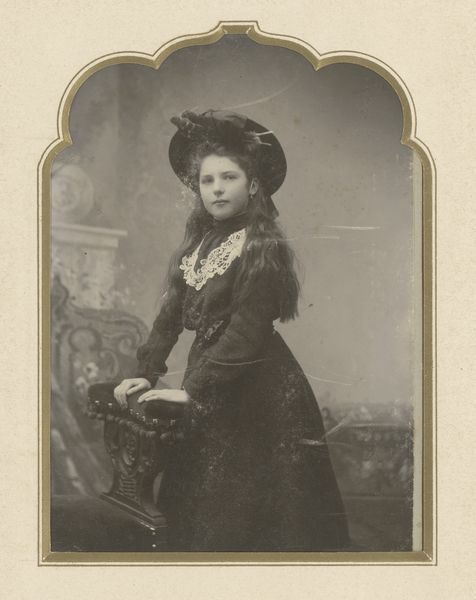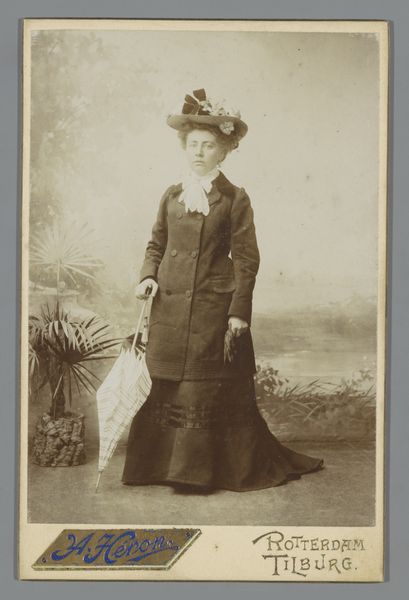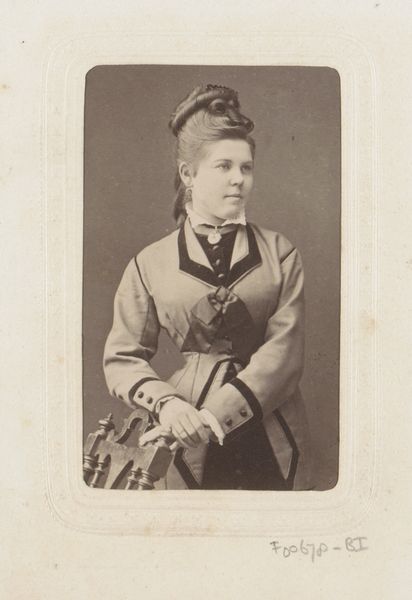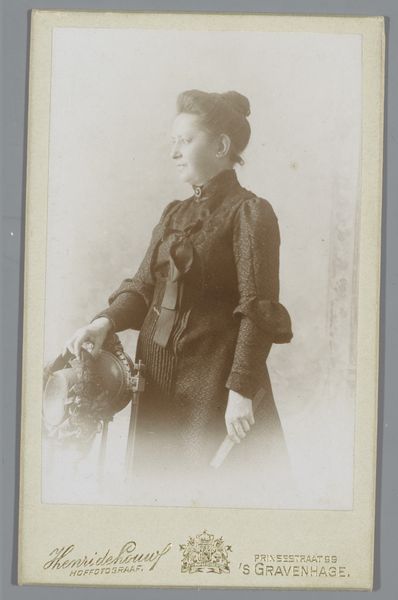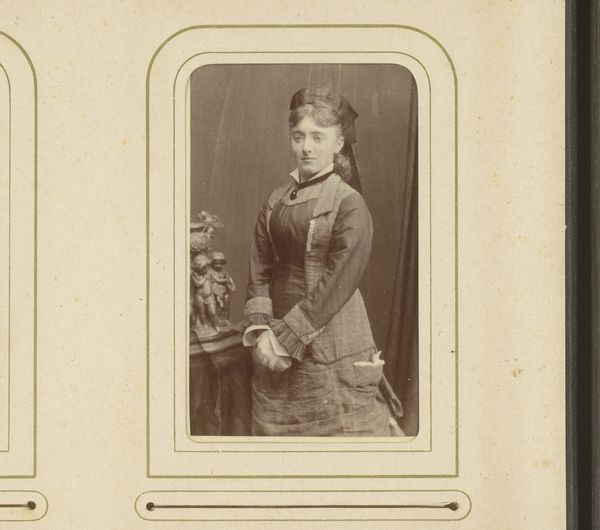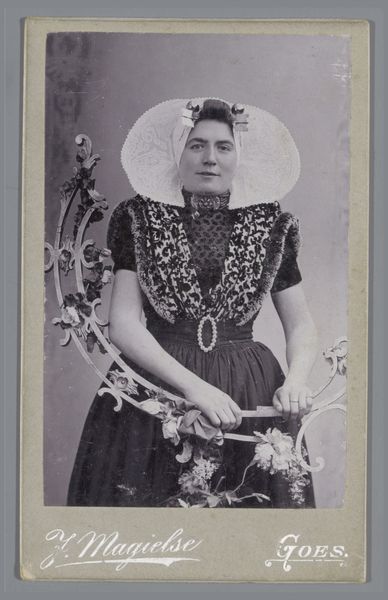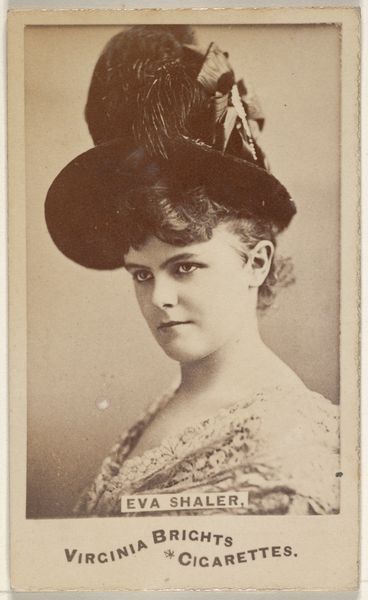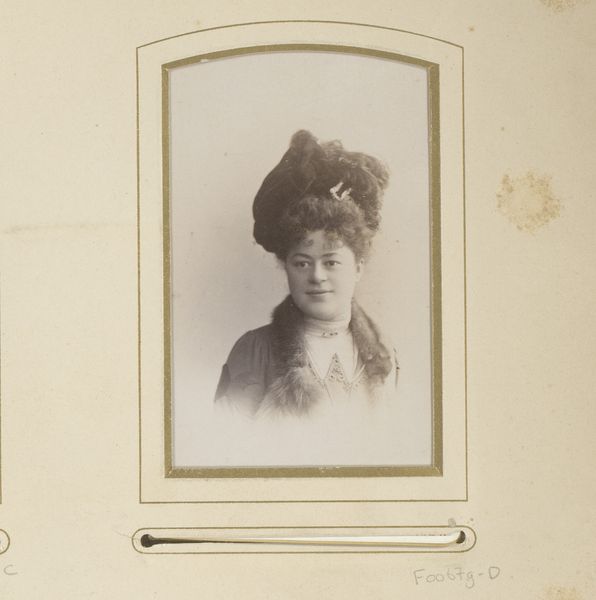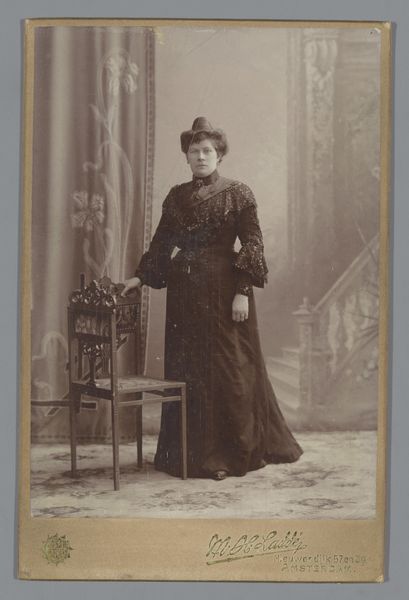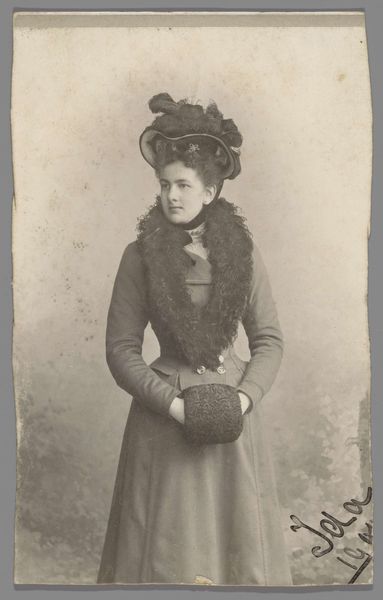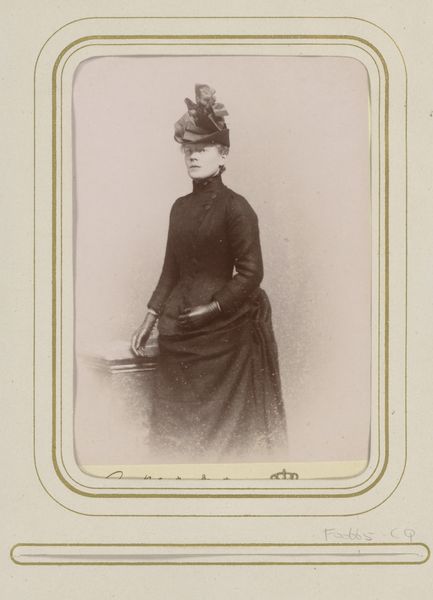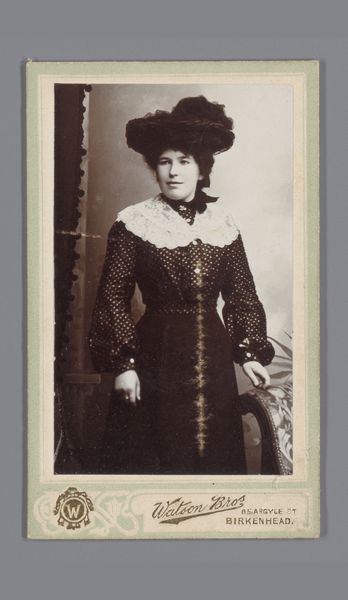
Portret van een onbekende vrouw met een hoed, staande achter een balustrade 1900 - 1920
0:00
0:00
photography
#
portrait
#
photography
#
historical fashion
#
monochrome
Dimensions: height 104 mm, width 63 mm
Copyright: Rijks Museum: Open Domain
Editor: This photograph by Johannes Gerard Middendorp, titled "Portrait of an Unknown Woman with a Hat, Standing Behind a Balustrade" dates from between 1900 and 1920. I find the subject’s direct gaze and elaborate attire quite captivating. How do you interpret this work within its historical context? Curator: This portrait is a fascinating window into the era. The woman's attire speaks volumes about the social constraints and expectations placed upon women at the turn of the century. Consider the restrictive corset and the elaborate hat - these were symbols of status and conformity. What does it mean to present such a composed and controlled image, especially during a time of emerging feminist movements? Editor: So you're suggesting that her formal appearance might mask a more complex narrative of female identity? Curator: Exactly! Photography itself was becoming more accessible, allowing individuals to craft and disseminate their own image. But this agency was often mediated by societal norms. Look at the balustrade – it's a barrier, both literal and metaphorical. How might we read her position behind it in relation to ideas of confinement or social separation based on gender and class? Editor: That's a powerful point. I hadn't considered how the setting contributes to the overall message about social barriers and the presentation of self. It makes me wonder who this woman was and what her life was like. Curator: Precisely. By examining these visual cues and contextualizing them within broader historical and theoretical frameworks, we can begin to unravel the complex narratives embedded within this seemingly simple portrait. The history of fashion provides insights to understand the nuances of power structures at that time, which shape individual freedoms and contribute to defining selfhood. Editor: I see the portrait with fresh eyes. Thank you for showing me how to view a work like this by recognizing cultural constructs that existed back then. Curator: The photograph prompts us to interrogate the performance of identity, the impact of social structures, and how art preserves not just likeness but broader stories that deserve exploration.
Comments
No comments
Be the first to comment and join the conversation on the ultimate creative platform.
